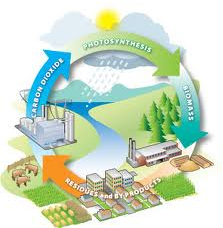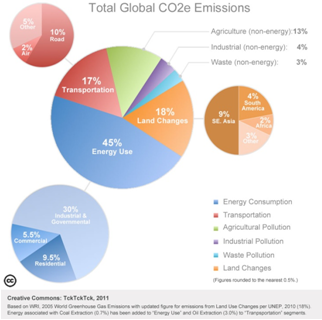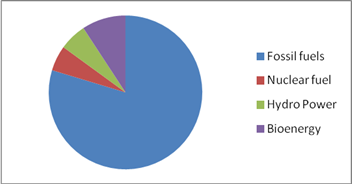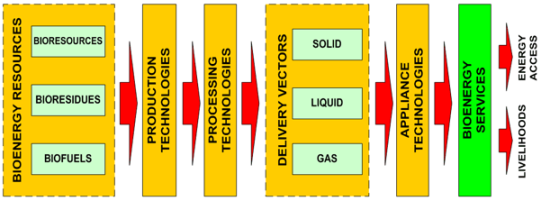What is Bioenergy?
Bioenergy can be defined as renewable energy from Biomass. Biomass, in turn is biological material derived from living, or recently living organisms. It is material which is directly or indirectly produced by photosynthesis and which is utilised as a feedstock in the manufacture of fuels and substitutes for petrochemical and other energy intensive products. In fact, biomass is unique among the entire renewable energy spectrum since it is the only source of carbon that can be converted into solid, liquid or gaseous fuels (Ref : Review by TIFAC, 2010). Agricultural and forest residues, municipal solid waste are also included in biomass.(Biomass Energy Centre), (IEA Bioenergy). Therefore Bioenergy is eventually solar energy and utilizing bioenergy is an idea probably as old as human civilization or existence.

(Image Ref: http://www.energyplan.gov.bc.ca/bioenergy/)
Energy is typically used for major human activities like transportation, heat and electricity. As per 2009 data,heat represented 47% of final energy consumption, compared with 17% for electricity, 27% transport; and 9% for 'non-energy use' (which covers fuels that are used as raw materials in different sectors, such as oil used to make plastics).(International Energy Agency).
Most of the energy needs are rapidly depleting fossil fuels which are becoming expensive by day These are mainly supplied from unstable regions of the world. Combustion of fossil fuels emit Carbon di oxide causing green house effect and eventual global warning. Energy consumption patterns is reflected in CO2 emmissions worldwide. (Yadwad et al. International Journal of Engineering Research and Technology ISSN: 2278-0181, August 2012)

(Image Ref: http://tcktcktck.org/climate-solutions)
Bioenergy is the highest contributor of non conventional energy sources.
(Source Data : http://www.ieabioenergy.com/MediaItem.aspx?id=5586)

Technological innovations and breakthrough research can substantially augment this contribution further.)
Bioenergy could sustainably contribute between a quarter and a third of global primary energy supply in 2050.(Ref : global energy)
Bioenergy can help mitigate green house gas emissions
Bioenergy can provide greenhouse gas savings.. Petroleum fuels are also originating from fossilized biomass : carbon sequestered millions of years ago. This carbon is released into atmospheric carbon dioxide (when the global environment has adapted to current levels)upon consumption. When biofuels are burnt on the other hand, emitted CO2 is replaced (to varying extents) as plants/ microbes consume it in photosynthesis during growth. (Ref :Biomass energy centre, UK) Thus bioenergy – based technologies can be carbon neutral or even carbon negative.

In addition Bioenergy offers several advantages like cleaner environment, waste management, local and less expensive source of energy, providing business opportunities and assuring energy security. (Ref : Biomass energy centre, UK).
Augmentation of rural income & employment generation assumes
Importance particularly for developing countries like India.
Various modern forms of Bioenergy : There are multiple ways in which biomass can be used to generate bioenergy. Depending on the local biomass the technologies available, the appropriate biofuel can be selected to fulfil needs of the communities. Bioenergy can be generated by combustion of biofuels which can be solids (briquettes), liquid biofuels (as additives or alternatives to conventional (fossil) transportation fuels – biodiesel, bioethanol, biobutanol. Biogas (Ref : Wikipedia, University of Wisconsin)
These mainly include
- Solid biofuels
Briquetts/ Pellets : Pressure heat and binding agents are used to densify loose biomass material into compact composites of different sizes. (Ref : Mahatma Gandhi Institute of Rural Industrialization Publication)

(Image Ref: http://pubs.cas.psu.edu/freepubs/pdfs/uc203.pdf) - Liquid biofuels
- Alcohols Mainly ethanol produced from fermentation of sugars derived from food grains or cellulose.
- Biodiesel : Methyl esters of edible or non - edible plant oils. E.g. Soybean, Castor, Jatropha, Pongamia (Karanj).
- Gaseous Biofuels
- Biopower generated by gasification – Incomplete combustion of biomass to generate gases which in turn can be used for heating, to run locomotives and to generate electricity. (Ref. Article by Anil Rajwanshi, NARI)
- b. Biogas – Mixture of methane and carbon dioxide. Fermentation/ anaerobic digestion of organic matter including residues and wastes can result into biogas. (Ref : Biomethane, UK)
Major areas where technology can contribute to the field of bioenergy - Modern bioenergy is a rapidly evolving field and needs endeavours from areas like fermentation, gasification, synthetic biology, chemical processes, biomass development and improvement (Lux Research Report 2010).
Bioenergy in India
India is one of the major consumers of energy (sixth largest) with a growing demand of energy. India has vast biomass resources which are yet to be exploited completely. Using these to their full potential could offer sustainable solutions to many problems. Biomass conversion into energy also offers rural employments and augmentation of rural incomes which is of special relevance to India.
Multiple research institutes, universities and private sector organizations in India are engaged in multi-disciplinary endeavours of bioenergy research (Table r and d). There are many companies in India where one or more technologies pertinent to Biotechnology are used to cater to various biofuel value chain. (Table - companies).
India can leverage her natural and cultural resources to further build on bioenergy sector in a economically and ecologically sustainable way and attain energy independence. (Ref : Bioenergy resources in India, MSSRF).
Evolution of Bioenergy is subject to a complex array of issues
Human endeavours in bioenergy sector can be better understood in 'Bioenergy pathway' developed by Practical Action, a Consulting group for DFID, Pisces, Govt of UK.
Understanding each component individually and in the network will help design policies and devise technologies by adhering to principles of availability, accessibility and acceptability defined by World Energy Concil (Ref : World Energy Council Publication 2004).

(Image Ref: DFID Piesces, Energy Research Consortium)
World
There are multiple challenges associated with bioenergy and biofuels e.g. food vs. fuel, access to sites, price and space required. Generation and utilization of bioenergy has social, economic and environmental implications and therefore needs consideration in addition to development of various technologies. Agriculture, forestry, biodiversity, environment are some sectors that will affect and will be affected by how bioenergy evolves. Opportunities and risks will therefore need careful scrutiny (Ref : Rajgopal and Zilberman). To meet its policy target of 20% blending of biofuels in transportation fuel by 2020 India has initiated concerted efforts at multiple levels involving state and central governments, NGOs and private sectors many of which are listed here.
